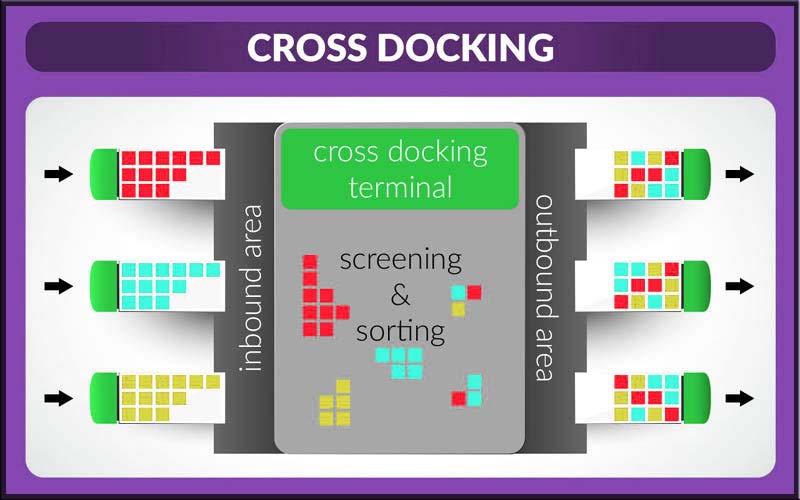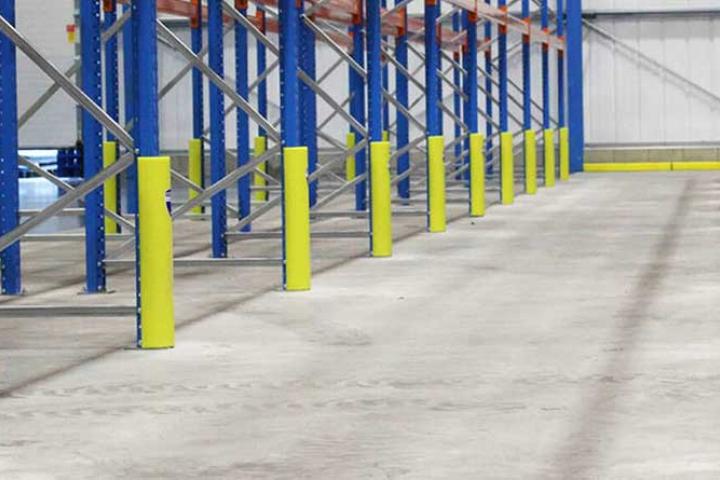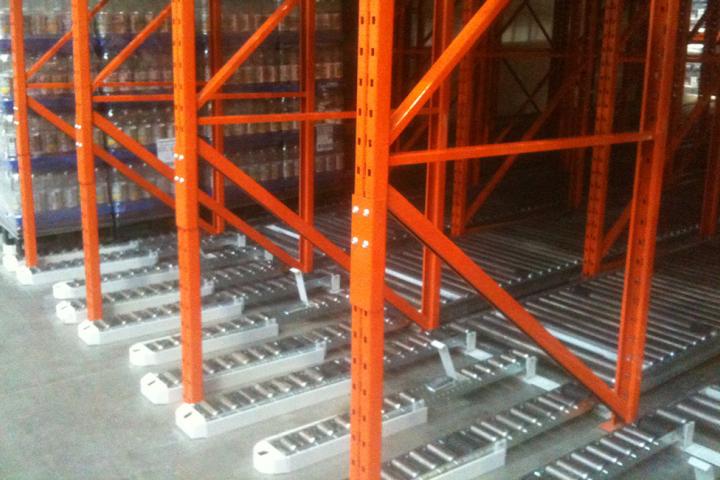Cross docking made easy
Cross docking can help to reduce storage costs by a process of transferring goods from an arriving vehicle directly to a departing vehicle without the need for storage. The cross docking meaning relates specifically to the loading dock area of a warehouse. When asked what is cross docking or what is a cross dock it simply means moving products directly from one vehicle to another usually from goods-in to goods-out. This is performed without storing the pallets even for a short period of time if at all.
In the case of handling pallets, a warehouse operative would use either a forklift, low level order picker or pallet truck to move the goods from a vehicle stationed at one dock across to a vehicle stationed at another dock. Loading docks or the loading docks ramps in a warehouse setting are the inlets and outlets of a warehouse operation. Its a process associated with the logistics industry and is also an important part of supply chain management.
Why is cross docking used throughout the supply chain.
Cross docking logistics processes allow for the utilization of different modes of transport to simplify the movement of goods, this is also referred to as Intermodal transport. The intermodal meaning can be defined as multiple vehicle types being used to transport goods from one destination to another. Intermodal transportation or intermodal freight can improve efficiency within the supply chain and can include road, rail, sea and air.
Another process achieved by cross docking is that goods are sorted while the operation takes place. The sorting of goods is an expensive and time-consuming task and usually takes place deeper within the warehouse. The sorting process is specifically for the preparation of delivery to different destinations.
Cross docking in warehousing is not too dissimilar to marshalling where the marshalling meaning can often also involve the cross docking process and vice-versa. The marshalling or staging area is used to process the sorting of goods ready for either delivery or dispatch. Marshalling also accounts for goods coming into the warehouse ready for storage within the pallet racking system. Goods can be combined which have arrived from different origins and can either be moved to a different warehouse or even directly to a port.
Cross docking warehousing can be applied differently depending on the stage where the goods are within the supply chain. There are also different cross docking types which are determined by whether the goods are for retail, specialist storage facilities or bound for a distribution centre. Staging areas or marshalling areas are often used for goods bound for the retail sector. Inbound materials would be sorted, consolidated and stored but only until the outbound shipment is ready for dispatch. Cross docking in warehouse applications has been in constant use since the 1930s. A cross docking facility was originally employed for the decanting of loads ready to be transported to the next destination by parcel carriers. This was also known within the supply chain as Less-than-truckload or LTL for short.

What are the benefits of cross docking goods for delivery?
Supply chain inefficiencies can cost companies a small fortune and can sometimes be difficult to identify. By using this proven technique you can reduce unnecessary tasks and streamline the supply chain. When cross docking is utilised it requires less manpower than the long term storing of goods do even when storing for a short period of time. This is due to the reduced amount of inventory handling needed which would otherwise require more labour.
In logistics, there is a system where a buffer is required in the stock levels and is referred to as safety stock. The expense associated with maintaining safety stock levels high enough to protect against fluctuations in demand can therefore be reduced. Cross docking specifically aims to reduce storage requirements within the warehouse so overall holding costs are reduced.
Cross docking facilitates faster deliveries and faster deliveries mean more satisfied customers which increases sales conversions and a more loyal customer base. In the retail sector, square footage is at a premium and the lower the in-store storage requirements are the greater the available retail space can be used. The larger the number of product lines that can be displayed the more likely it is to increase footfall.
How to determine whether cross docking would work for you.
There are a number of factors to consider that help indicate whether a cross docking facility would benefit or indeed be right for you. Cross docking is of particular value within the retail sector because of the geographical location of the many points of sale. The number and variety of product lines being shipped is also a factor.
To make cross docking worth considering there needs to be a reliable communication stream between supplier, distributor and end customer. When goods are stored in pallet racking systems the processing of those goods takes place at a much slower rate. On the other hand, goods not earmarked for storage have more momentum behind them so, therefore, communication both upstream and downstream through the supply chain is critical.
Do the goods have a long distance to travel between supplier and customer and yet deliveries remain time-critical? Cross docking allows efficient movement for goods and can massively reduce your transport costs. Cross docking can provide more options when it comes to transportation allowing you to have more control over the process. The complexity of loads is another situation where cross docking can become a huge benefit. The greater the variety of goods the more space is required to sort and store the products. Being able to transfer goods directly to a waiting vehicle reduces the number of goods in the staging areas which simplifies the marshalling process.

Warehouse configuration for cross docking efficiency.
The number of dock loading doors can vary greatly from warehouse to warehouse. The configuration of the building layout has can provide cost savings depending on the number of doors. When you consider there could be in excess of 100 doors then it's no surprise that the layout has a major impact on the warehouse efficiency. Remember goods-in and goods-out are two distinct areas within the warehouse and both of which need to be serviced by the cross docking operation. It has been found that upwards of 150 doors is better laid out in a ‘T’ shape rather than a straight line. Even more surprising is where 200+ loading docks are in use an ‘X’ configuration for the building loading areas is most likely to allow for the best cost savings.
Conclusion
So we have established that ultimately cross docking a great way to break down large shipments into smaller consignments for ease of delivery. The travel distance between goods-in and goods-out will be a factor in deciding the equipment best suited for the job. Low level order pickers and forklift trucks are the most popular choice due to their speed, safe handling and carrying capacity. A WMS is an integral part of a cross docking process that works fast and efficiently. Even though cross docking is usually a process reserved for large 3PL and distribution centres it can still be utilised in smaller operations where it may be just as useful but without being formally recognised as a measurable process.







